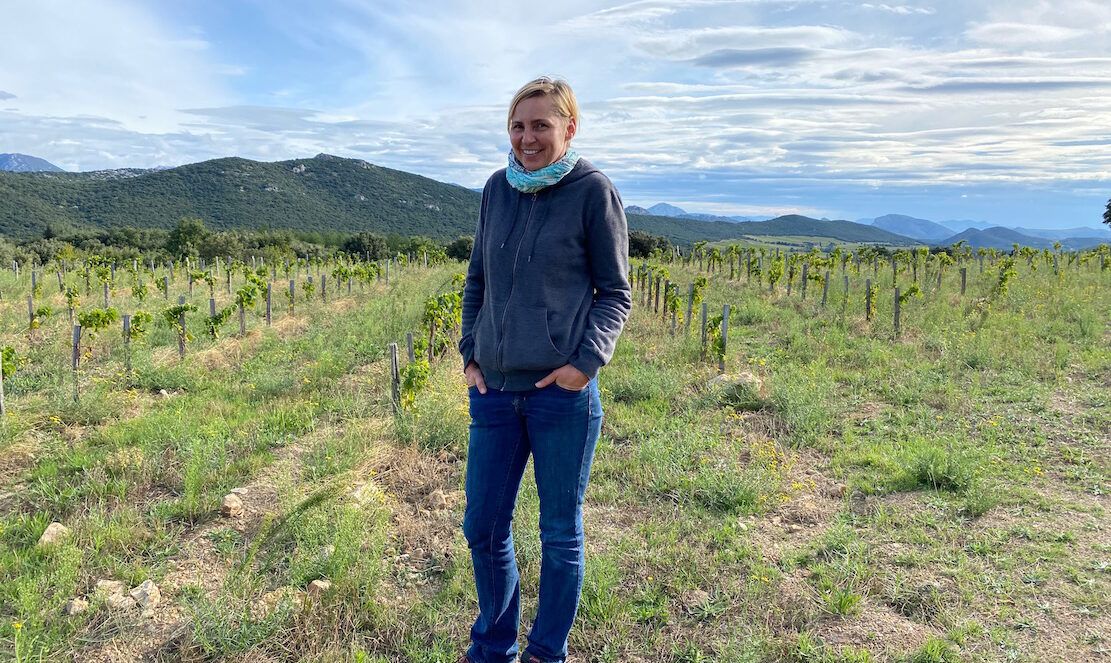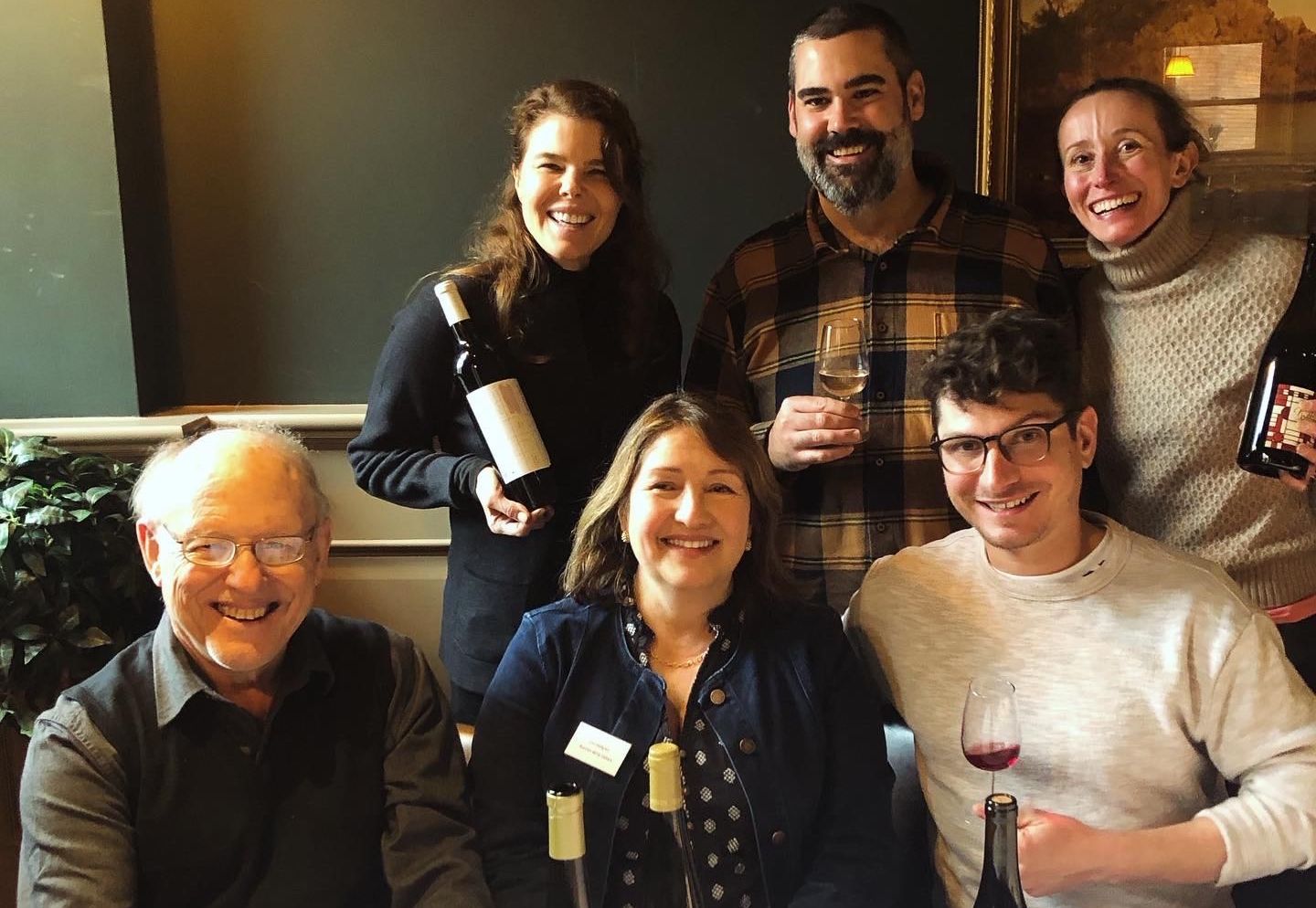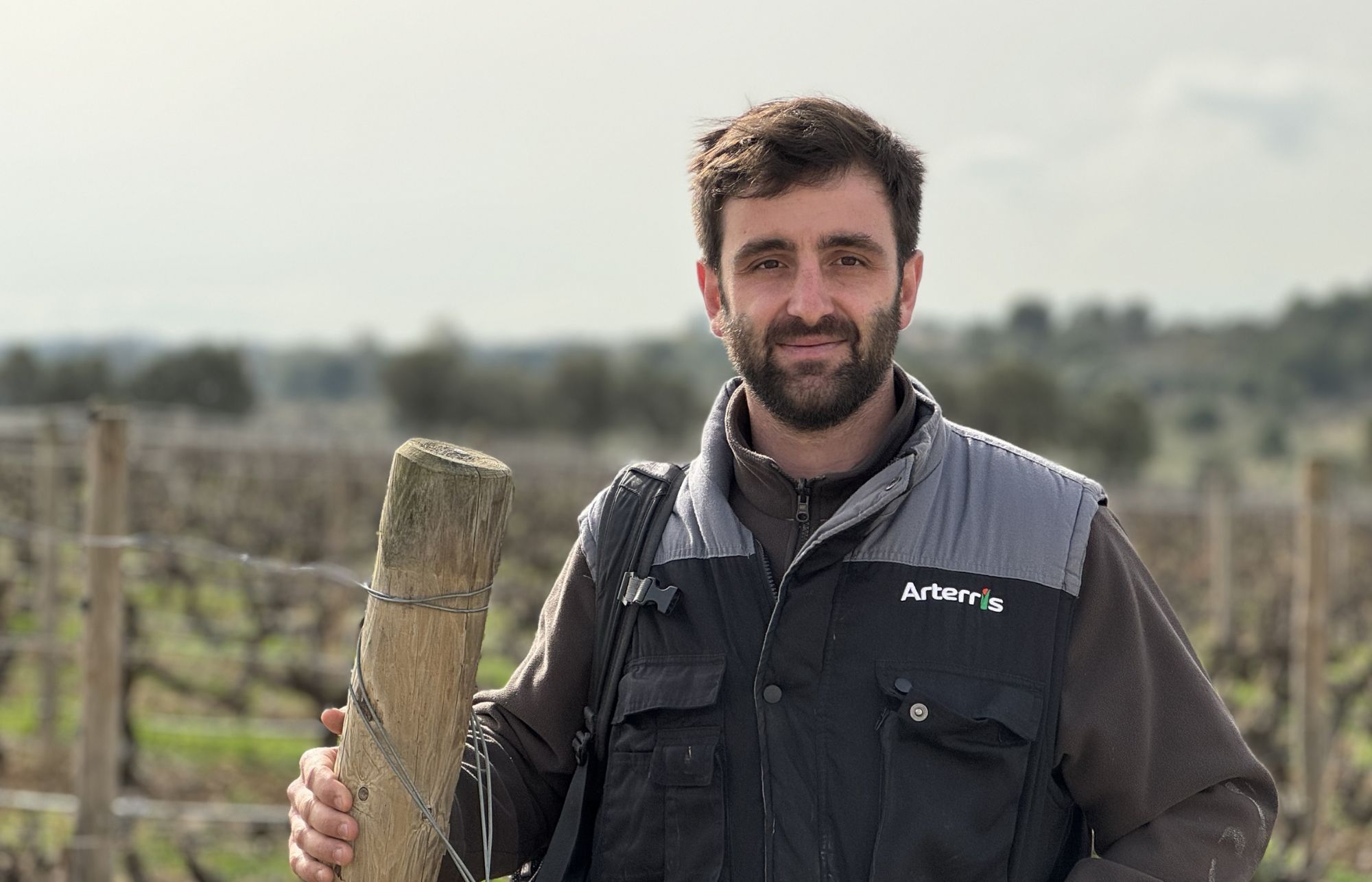Le Soula releases its wines when they are ready to drink and this year are, in esoteric fashion, releasing three new vintages of its flagship red at the same time – 2018, 2014 and (for the first time) 2009
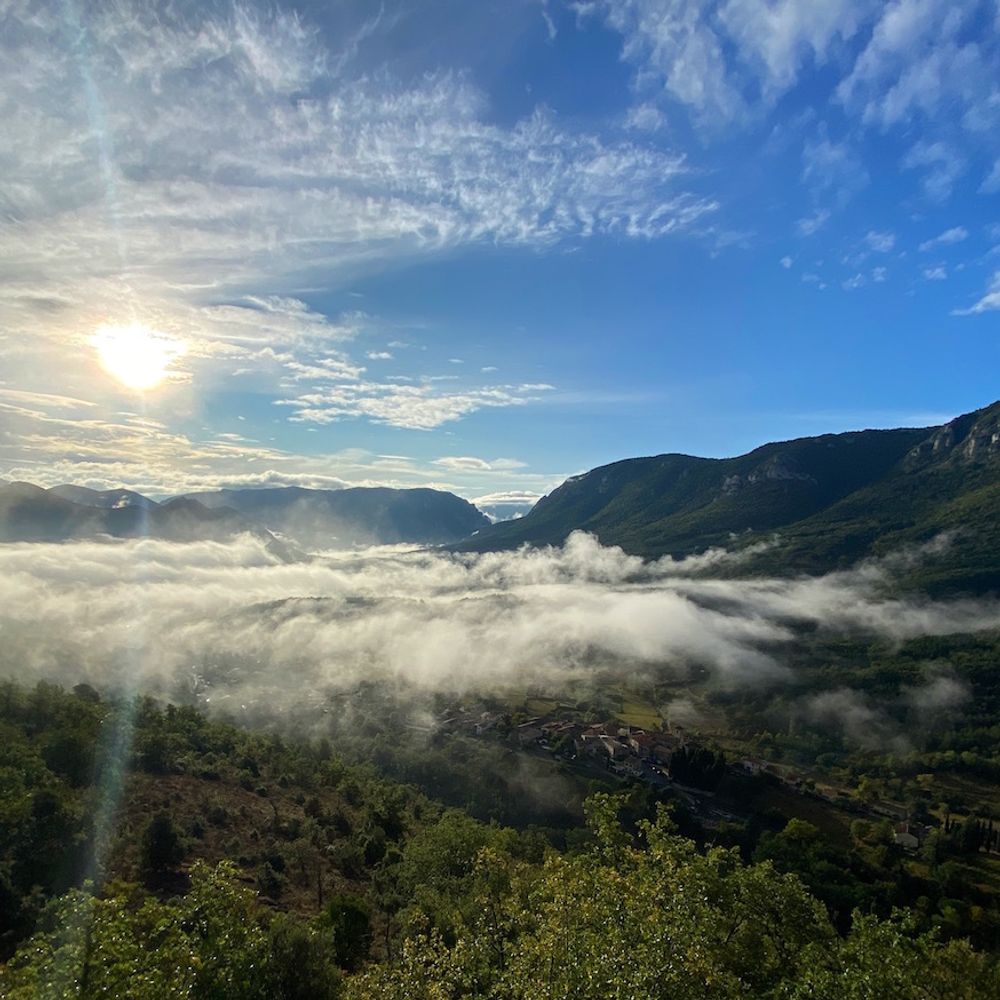
The drive from Quillan to Perpignan is one of the most spectacular wine routes in the world, taking in Cathar castles, wild terrain and some of man’s earliest remains
Le Soula has to be one of the most original winemaking estates in the Roussillon if not in the whole of the South of France. It only produces six different wines but within those six wines is an almost infinitesimal range of possibilities of varieties, vintages and blends.
Le Soula makes still wine as if it was a Champagne house.
Excepting the rosé which is made of 100% Syrah from one vintage, the other five wines are made of blends that change every year – sometimes dramatically so – not only with the grapes used, but also with the percentage of those varieties within the blends. Owing to the fact that the winery has vast amounts of older vintages, three of its wines are multi-vintage and now have numbers rather than being vintage-specific, so that in one wine there can be six different vintages blended together.
And the brilliant thing is that it works. Very well indeed.

Wendy Paillé, estate manager since 2016 in a vineyard newly planted with Grenache Noir (goblet) and Sauvignon Blanc (trellis)
Le Soula’s wines are also held back until they are ready to drink so, in the case of its flagship red Le Soula, not only is the 2009 only being released for the first time this year, but they have also decided to release the 2014 and the 2018 at the same time – this before the 2015, 16 or 17 are available. The result is a fascinating interpretation of this particular corner of the Côtes Catalanes – in three different years and with very different blends.
“It shows that nature is going to give us different grapes each year,” says Wendy Paillé the manager of the estate, “we have to adapt and try not to repeat ourselves.”
It also shows just how much wine reserves Le Soula has, a legacy of their launch in 2001 with 15 hectares of vines – ambitious to say the least for a completely new wine estate – resulting in them producing more wine than they could sell.

Le Soula’s new facility at Saint Martin de Fenouillet is made from local pine, is powered by solar panels and collects up to 20,000 litres of rainwater
Wendy Paillé – a new chapter at Le Soula
The appointment of Wendy Paillé in 2016 marks a whole new chapter in this fascinating story of a winery with attitude that refuses to play by the rules. A South African ex-sommelier who cut her teeth making wine in 2003 for a local winery in Virginia, Paillé then moved to Anjou where she was a part of the team that established Pithon-Paillé, the low intervention winery pushing the envelope on what is possible with Chenin Blanc (amongst others) in the Loire.
As we walk through the Grenache Noir and Sauvignon Blanc vines she has recently planted 400 metres up in the patchwork of vineyards around Le Soula’s new building in St Martin de Fenouillet, Paillé explains where she wants to take the wines
“My aim is to have 16 hectares in production, so to have the same yield for less work,” she explains.
When she joined Le Soula in 2016 there were 24 hectares of productive vines, today there are 22 hectares as she undergoes systematic replanting – the re-structuring coming with some difficult decisions attached, particularly regarding some of the older vines.
Some of the vines that Paillé inherited include Macabeu dating back to 1900 and Carignan that was planted in 1919; romanticism aside, these vineyards sometimes produce a mere 5-10 hectolitres per hectare. Younger vines obviously yield more but they are also much more resistant than older vines to mildew and the other diseases that have been ravaging this year’s crop – a shocking 75% of her fruit has been lost in 2020. Apart from mildew and hail, there are two key threats in this region: Flavescence dorée (a phytoplasma disease of the vine spread by leaf hoppers) and wild boar, a completely bare Vermentino vineyard testament to their powers of destruction.

So let’s start at the beginning
To get a real sense of Le Soula’s importance as a wine estate, situated in this Catalan borderland at the edge of France and Spain, you have to turn the clock back to understand where they have come from.
You have to go back to 1985 when Gérard Gauby first inherited his grandfather’s five hectares of vines an hour’s drive away in Calce. Rather than continue to sell the grapes to the local cooperative Gérard, decided to go it alone and, together with his wife Ghislaine and son Lionel, turned Domaine Gauby into the iconic 45 hectare biodynamic estate that it has become today. In doing so he helped pull the Roussillon part-way out of the shadow of the Languedoc and onto the map of serious wine-lovers.
Gauby’s influence is huge in the Roussillon, with everyone seemingly having a connection to his family, and with a new generation of exciting winemakers hugely indebted – Olivier Pithon, Domaine de L’Horizon and Roc Des Anges to name just a few.
The importer of Gauby’s wines into the UK during the 1990s were Roy Richards and Mark Walford who were inspired by Gérard’s vision of what the vines could achieve in the elevated terroir of the Fenouillèdes high in the foothills of the Eastern Pyrenees. Together they formed a partnership and Le Soula was born, its first vintage being in 2001.
And they ‘started cold’ with 15 hectares, which is why from then until now Le Soula has been producing more than it has been selling. The end result is that its winemakers – first Gérard Gauby, then Gérald Stanley and now Wendy Paillé – have the luxury of blending back vintages and releasing wines only when they are ready to drink.
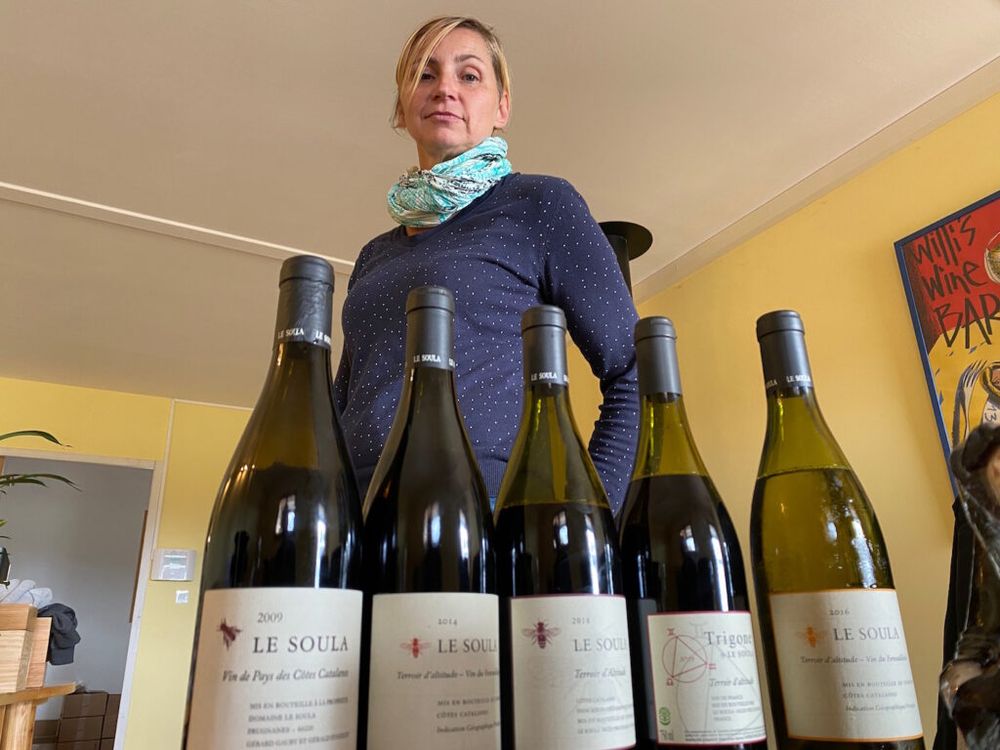
Wendy Paillé at the tasting, September 2020
Tasting through the wines
Le Soula blanc and Le Soula rouge are the winery’s flagship wines, a dry white and a red, made from single vintages but varying blends, particularly with the white. They are wonderfully expressive, fresh and complex with great elegance and refinement.
Trigone white and Trigone red are multi-vintage blends of varieties that differ year by year. Their style is to be fresh, light, easy drinking wine and fruit driven. “The kind of wine at a barbecue where you ask yourself ‘why didn’t we open a magnum?” Paillé says
Three of the best:
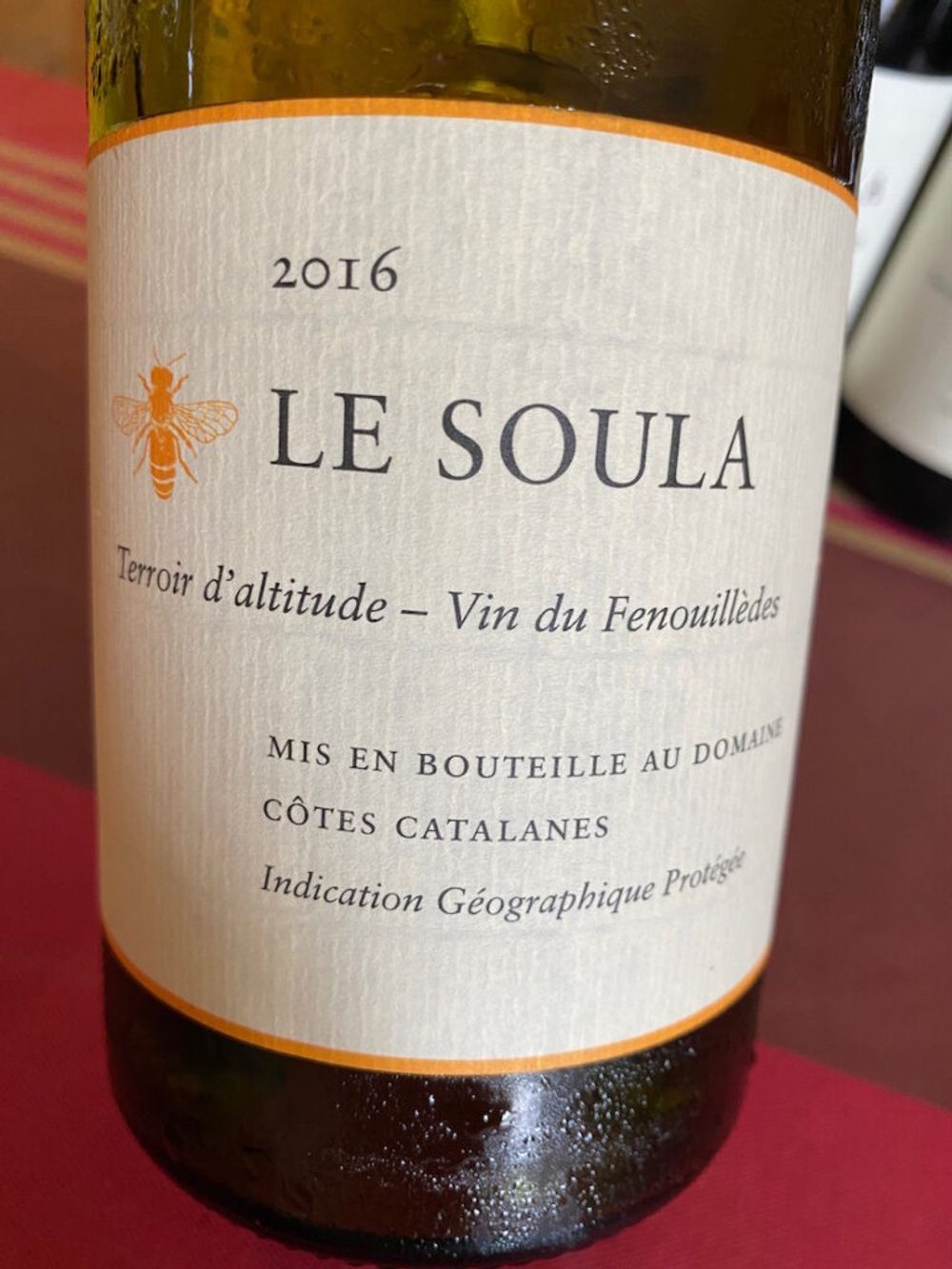
Domaine Le Soula blanc, 2016, Vin de Pays des Côtes Catalanes
All of Le Soula’s wines have their place but I think it fair to say that their top white is their go-to wine and one of the top whites made in the region. Released when ready to drink (after 22 months aged in a variety of formats), it can still age spectacularly well. I have been at a blind tasting where a 10 year-old Le Soula blanc was mistaken for a very top Burgundy.
So given that this is one of Le Soula’s two flagship wines, the change in the grapes used in the blend is staggering. The 2016 vintage is an esoteric blend of 49% Sauvignon Blanc 23 % Vermentino, 14% Grenache Blanc and 12 % Macabeu with the remaining 2% made up of Grenache Gris, Malvoisie du Roussillon, Marsanne and Rousanne.
The 2014 (there was no 2015) had loads more Macabeu and little Vermentino; in 2013 Vermentino was the dominant grape, go back to the first vintage in 2001 and there was neither Vermentino nor Macabeu in the blend – 40% was Grenache Blanc, 30% was Sauvignon, 20% Marsanne and Roussanne and 10% Chenin of all things. It would be bizarre if it didn’t make absolute sense.
The new Le Soula blanc 2016 (the year that Paillé joined the winery) is a magnificent wine. Surprisingly, given all the changes just mentioned, the wine tastes completely in line with what you expect from a Le Soula blanc –a wine that is fresh, taut, has depth and intensity mid-palate, fine-grained texture and a bit of tannic grip. The colour is mild gold, the nose is complex and intriguing and there is a characteristic mix of fruit, flowers and garrigue herbs – think greengage, orange blossom and wild fennel.
The vines range from 25-62 years old, the grapes are whole-bunch pressed, with cold settling and natural yeasts. 60% of the wine is aged in 500-litre demi-muids, 28% in new Stockinger 3000-litre vats and the rest in tank. No fining, light filtration and it all clocks in at a refreshing 12.5% – quite remarkable when ‘down the road’ it is hard to find a wine that comes in at under 14.5% abv.

La Macération du Soula no.19, Vin du Fenouillèdes,
Wonderfully esoteric and simply wonderful – my favourite orange wine of the moment. It’s a blend of 76% Vermentino and 24% Macabeu from five different vintages – 2014, 15, 17, 18, 19 – coming from vines up to 52 years old grown in vineyards 350-520m high on decomposed granite soils, biodynamically farmed. Sound interesting?! It should!
The colour is burnished copper; the aromas fresh and intoxicating – marmalade, orange peel, nuts and peach blossom – complex and stunning. The palate is smooth, dry and full of fresh, lively fruit flavours. Unlike a lot of orange wine the fruit is ripe, fresh and full of life with real elegance and precision too. The finish is dry and textural but doesn’t stop dead in its tracks with that blotting-paper feel you sometimes associate with orange wine – it’s almost subtle and could rightfully call itself a fine wine. In fact it’s a fine wine first, orange wine second.
As for the vinification: each barrel is aged separately, with the barrels topped up with white wine as they age, the grapes are pressed whole bunch and have a short 15 day maceration, then there is no punchdown or pumpover.
“I want it to stay a wine before calling it an orange wine – and we only release it when we can achieve this level,” says Paillé. Well said, it works.
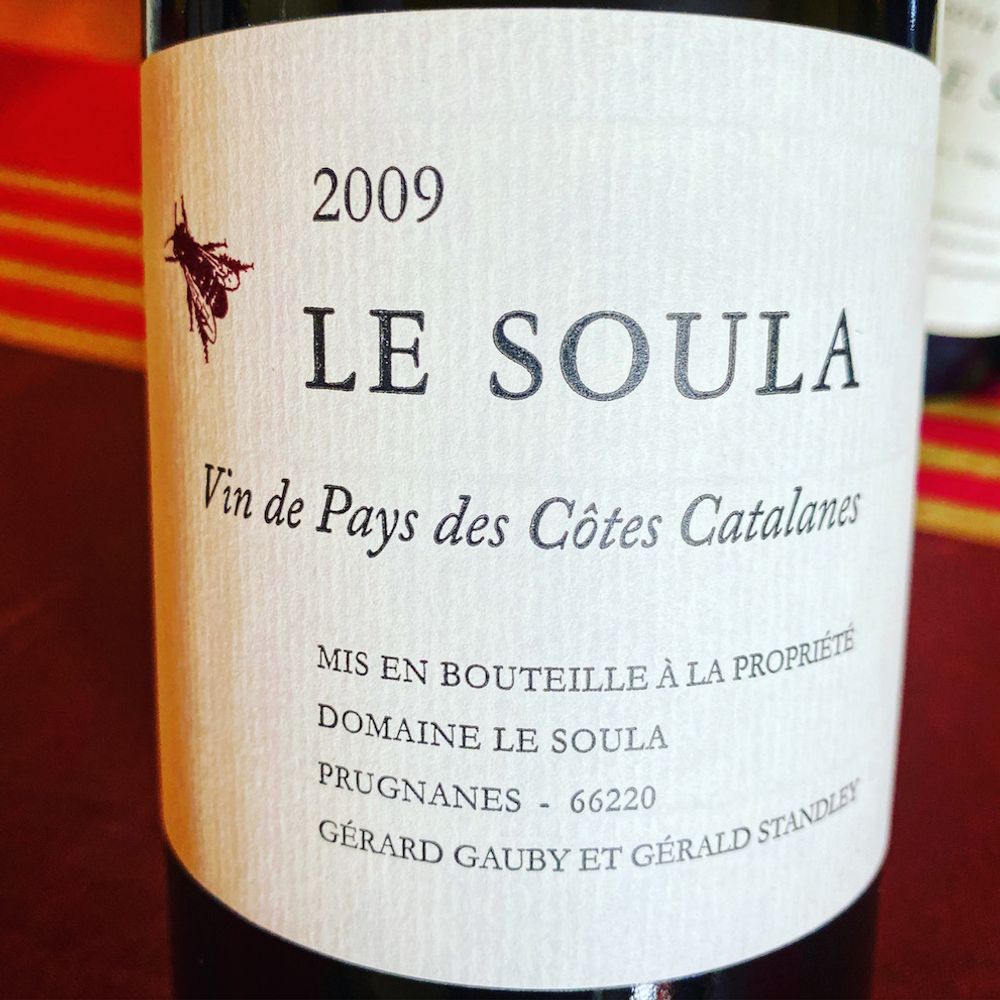
Domaine Le Soula rouge, 2009, Vin de Pays des Côtes Catalanes
One of three new Le Soula rouge wines the estate is releasing this year, the 2009 alongside the 2014 and 2018, gives a fascinating glimpse of vintages, styles and what heights the Roussillon is capable of.
2009 was a cracking vintage in the region and the nose offers the drinker so much promise that the wine delivers on the palate.
It is a blend of 67% Carignan, 30% Syrah, and 3% Grenache Noir, most vines pretty old (some up to 70 years) and grown on largely granitic soils at high altitude, the fruit is whole bunch pressed and then spends 21 months ageing in a variety of wood formats and ages, but all large format and very little new wood.
The wine is in its secondary stage, although the acidity and freshness makes it feel so youthful (presumably why it is only being released this year). On the eye it is dark ruby with a redish hue, the nose is a real ‘come on’ offering a tempting mix of blackberry, black cherry, dried fig, liquorice root, sweet wood; the mouth-feel is medium bodied, a delightful mix of age and youth, terrific balance – still firm acidity, but with real depth of flavour; fruit more on the red spectrum, more macerated strawberry and red cherry. Intoxicating stuff. I bought a six-pack.
